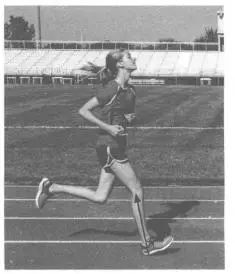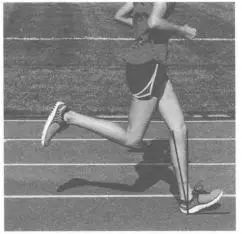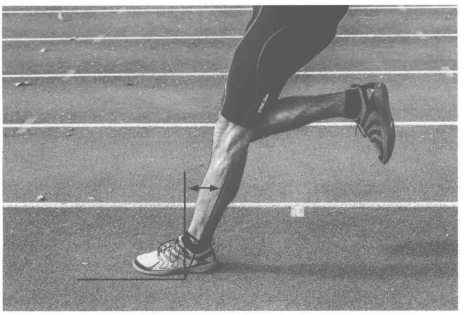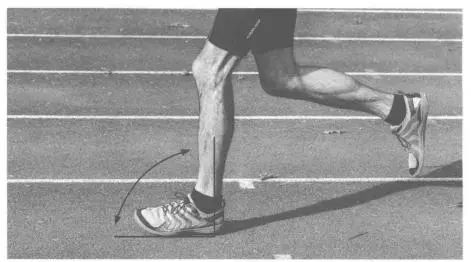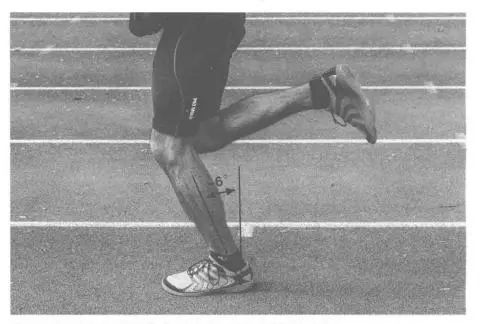When two objects collide, the result is purely physical. This applies whether it is a motor vehicle speeding on a highway, a billiard ball rolling along a felt table, or a runner colliding with the ground at a cadage of 180 steps per minute.
The specific characteristics of the contact between the ground and the runner’s feet determine the runner’s running speed, but most runners seldom spend time studying their “collision dynamics”. Runners pay attention to their weekly kilometers, long-distance running distance, running speed, heart rate, structure of interval training, etc., but often overlook the fact that running ability depends on the quality of the interaction between the runner and the ground, and the results of all contacts depend on the Angle at which objects contact each other. People understand this principle when playing billiards, but they often overlook it when running. They usually pay no attention at all to the angles at which their legs and feet come into contact with the ground, even though some angles are highly related to maximizing the propulsion force and minimizing the risk of injury, while others generate additional braking force and increase the possibility of injury.
People run in their natural gait and firmly believe that this is the best running mode. Most runners do not attach importance to the point of force application when in contact with the ground (whether to touch the ground with the heel, the sole of the entire foot or the forefoot). Even if they choose the wrong contact point that increases braking force and the risk of injury, they still generate greater force through their legs. Few runners consider the hardness of their legs when they touch the ground, although hardness has an important influence on the impact force pattern. For example, the greater the stiffness of the ground, the greater the force transmitted back to the runner’s legs after being impacted. The greater the hardness of the legs, the greater the forward force generated when being pushed to the ground.
By paying attention to elements such as the ground contact Angle of the legs and feet, the contact point, and the hardness of the legs, the contact situation between the runner and the ground is predictable and repeatable. Moreover, since no runner (not even Usain Bolt) can move at the speed of light, Newton’s laws of motion apply to the outcome of contact regardless of the runner’s training volume, heart rate or aerobic capacity.
From the perspectives of impact force and running speed, Newton’s third law is particularly important: it tells us. If a runner’s leg is relatively straight when it touches the ground and the foot is in front of the body, then this foot will touch the ground forward and downward, while the ground will push the runner’s leg and body upward and backward.
Just as Newton said, “All forces have reaction forces of equal magnitude but opposite directions.” In this case, the direction of the reaction force is exactly opposite to the direction of movement that the runner hopes for. In other words, the runner wants to move forward, but the force formed after coming into contact with the ground will push him up and backward (as shown in the figure below).
When a runner touches the ground with the heel and the foot is in front of the body, the direction of the initial impact force (and the resulting thrust force) is upward and backward, which is far from the expected direction of movement of the runner.
When a runner touches the ground at the wrong leg Angle, Newton’s law states that the force generated must not be optimal, and the runner can never reach the fastest running speed. Therefore, it is necessary for runners to learn to use the correct ground contact Angle, which is a fundamental element of the correct running pattern.
The key Angle in ground contact is called the “tibial Angle”, which is determined by the degree of the Angle formed between the tibia and the ground when the foot first touches the ground. The exact moment for measuring the tibial Angle is when the foot first contacts the ground. To determine the Angle of the tibia, a straight line parallel to the tibia should be drawn starting from the center of the knee joint and leading to the ground. Another line starts from the contact point of the line parallel to the tibia with the ground and is drawn straight forward along the ground. Then subtract 90 degrees from this Angle to obtain the actual tibial Angle, which is the degree of the Angle formed between the tibia at the point of contact and the straight line perpendicular to the ground.
For example, if the Angle between the ground and the tibia when the foot first touches the ground is 100 degrees (as shown in the figure below), then the actual Angle of the tibia is 10 degrees (100 degrees minus 90 degrees). Remember, the tibial Angle is actually the degree of the Angle between a straight line perpendicular to the ground at the point of contact and the tibia.
The tibial Angle is the degree of the Angle formed between the tibia at the point of contact and the straight line perpendicular to the ground. The tibial Angle can be positive, zero or negative. If the tibia tilts forward from the knee joint when the foot contacts the ground, the tibial Angle is positive (as shown in the figure below).
If the tibia is exactly perpendicular to the ground when the foot touches the ground, the tibial Angle is zero (as shown in the figure below).
If the tibia tilts forward from the knee joint when touching the ground, the tibial Angle is positive. When touching the ground, the tibial Angle is -6 degrees (84 degrees minus 90 degrees) (as shown in the figure below), and the runner may fall forward when touching the ground. If the tibia tilts backward from the knee joint when touching the ground, the tibial Angle is negative.
Having said so much, have you understood the elements of the running pattern?
Post time: Apr-22-2025


